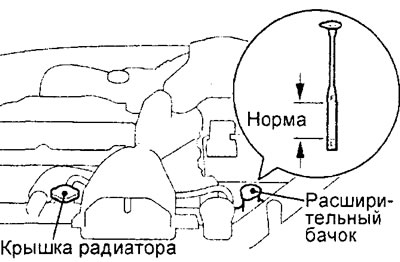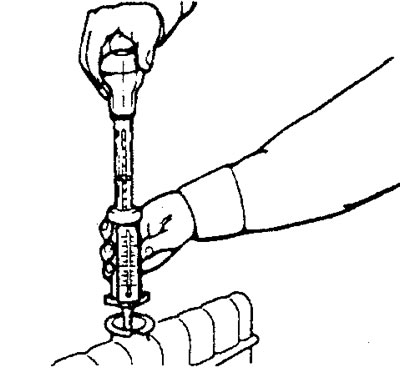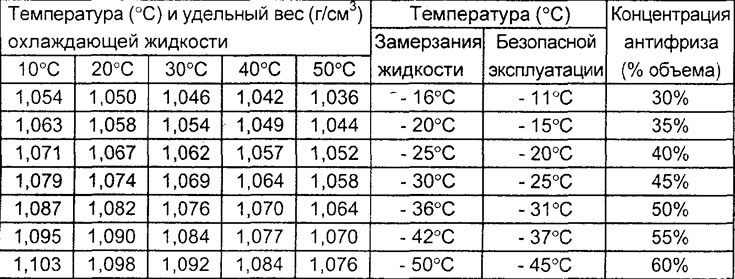Note: Since the cooling system is closed type, the normal loss of coolant is small. A noticeable drop in coolant level may indicate leaks.

In addition, if the expansion tank is completely empty, then remove the radiator cap and add coolant to the level of the base of its filler neck.
2. Check the quality of the coolant.
A) Remove the radiator cap.
Caution: To avoid burns, do not remove the radiator cap or expansion tank cap while the engine is hot, as fluid and vapor are under pressure.
b) Check for rust deposits around the radiator cap valves and their seats on the radiator filler neck.
V) Check that the coolant is clear and free of oil. If the coolant is contaminated, clean the channels of the cooling system and replace the coolant.
G) Reinstall the radiator cap.
3. If necessary, check the concentration of antifreeze.
A) Measure the specific gravity of the coolant with a hydrometer.

Table. Relationship between coolant density and antifreeze concentration.

b) Measure the coolant temperature and determine the concentration of antifreeze, taking into account the relationship between specific gravity and temperature, based on the data in the table below. Check if the results are normal (see section "Coolant replacement"). Top up with antifreeze or distilled water if necessary.
